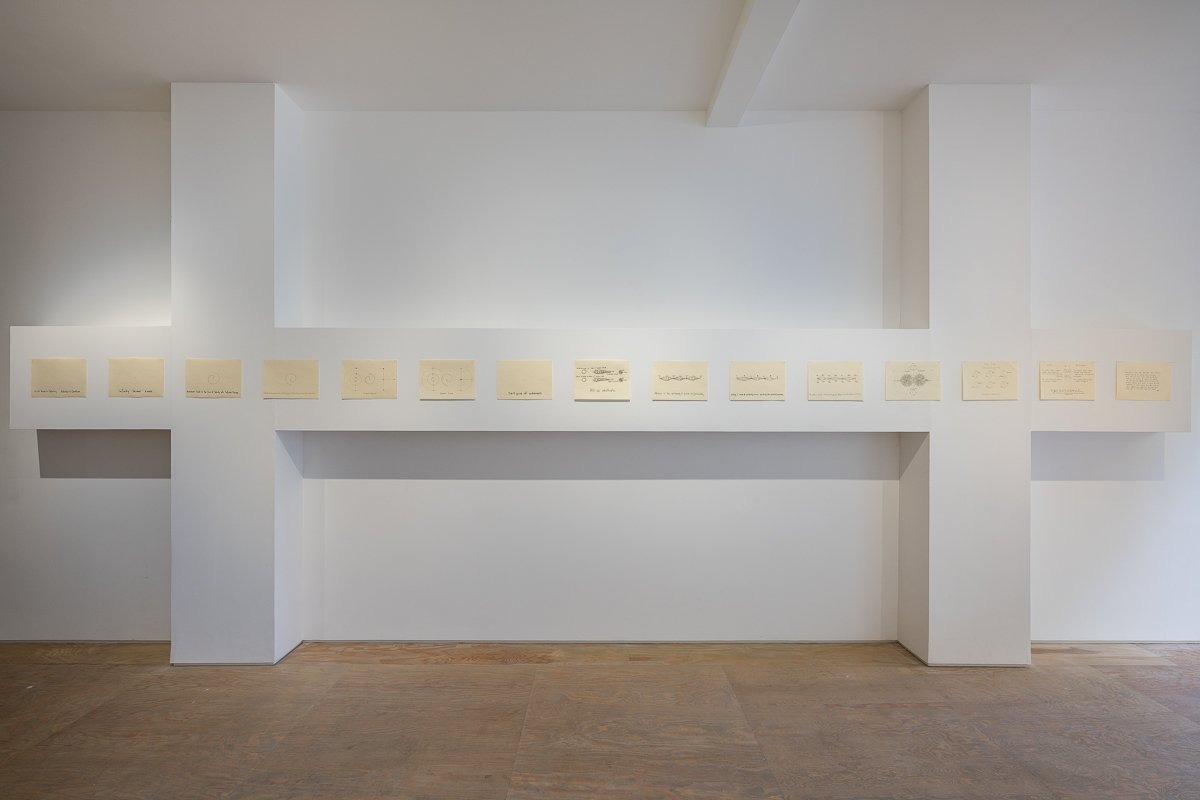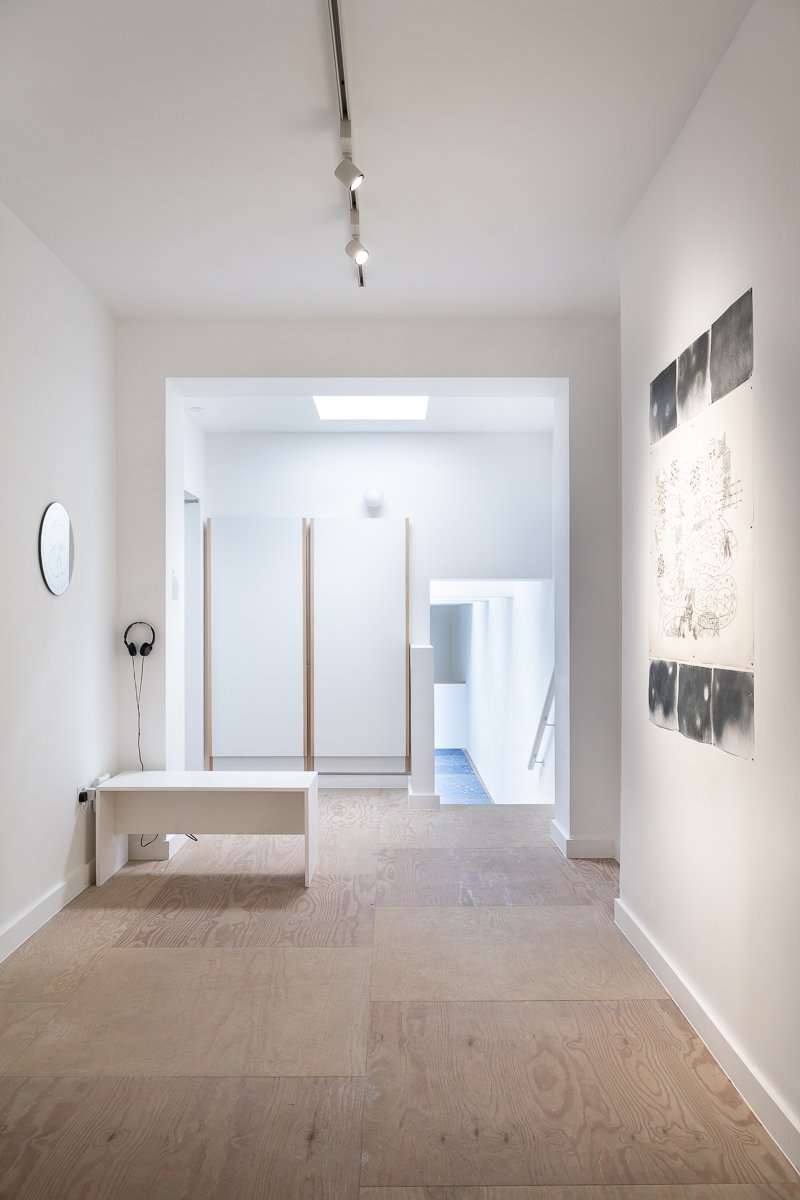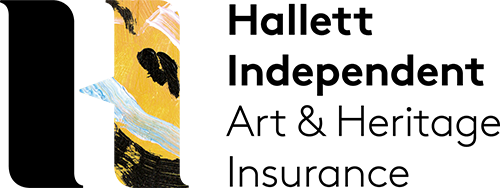A group exhibition featuring Bonnie Camplin, Annie Goh, Jackie Karuti, Janina Kraupe-Świderska, Alexandra Paperno. Curated by Daria Khan.
The title of this exhibition is inspired by the enigmatic painting ‘Cosmic Mother’ (1970) by the Soviet artist Galina Konopatskaya (1911–1989). In the painting, the Cosmic Mother appears as an ethnically ambiguous, androgynous person holding a baby in their arms. Both mother and child wear astronaut suits and are floating in outer space. The composition echoes Christian Orthodox icons of the Madonna and Child found in churches, but instead of the traditional golden halo surrounding the Madonna’s head, the Cosmic Mother floats in front of planet Earth.
This 1970 masterpiece belongs to the tradition of Socialist Realism, a style of state-sponsored art used to spread communist propaganda and atheist values in Soviet Russia. Konopatskaya’s painting suggests the holy Madonna should be replaced with an atheist image of a woman-astronaut. Her figure alludes to the first woman in space – the Soviet cosmonaut Valentina Tereshkova in 1963 – and the supremacy of science and technology over religion. But women’s emancipation under communism was deceptive. The state needed women to enter the labour market, as well as to become mothers, in its quest to become the world’s leading power, during the Cold War. It demanded both kinds of labour, to conform to the state’s production and reproduction growth plans.
Yet, what would happen if we set aside this context? If, instead, we chose to view the image through the prisms of cyberfeminism and queer science-fiction, and in doing so, build an alternative system of knowledge around it? Dispensing with its historical context might leave us with another, liberated image – a futuristic portrait of an almighty science fiction icon, a gender-fluid Goddess, a cosmic carer.
This image acts as an invitation to re-imagine the history of art and feminism to our advantage. It asks us to reflect on the relationship between science, ideology, and the imagination. Could we view the Cosmic Mother as an optimistic premonition that speaks to a queer universe, a place independent of biological parenthood, where participation in the realms of science, technology and religion are no longer gendered and racialised – but equalised? Artists’ works in the show draw on cosmologies, science-fiction, esoteric practices and ancestral mythologies that deconstruct officially approved scientific discourse. Featuring video, sound, painting and drawing, the exhibition examines the way alternative knowledges and radical imaginations overlap across cultures and geographies, and act as a tool to resist a dominant world order of utility, convenience and standardisation.
The exhibition was made possible thanks to Taus Makhacheva, Dominik Pajewscy, Grażyna Świderska, Mateusz Swiderski and Paulina Olowska.
About the artists
Bonnie Camplin (b. 1970, London)
Bonnie is an artist whose work spans drawing, film, performance, music and writing, as well as immaterial and situational research. Refusing typical knowledge paradigms, Camplin draws from subjective experiences to explore the way we relate to and perceive our material, human, and non-human entities.
Annie Goh (b. 1984, Birmingham)
Annie is an artist, researcher and performer working primarily with sound, space, electronic media and generative processes within their social and cultural contexts. Her PhD thesis at Goldsmiths University entitled “Sonic Knowledge Production in Archaeoacoustics: Echoes of Elsewhere?” focused on the myth of echo in archaeoacoustics, a field that investigates the acoustic properties of archaeological sites to provide clues in understanding past human behaviour. Combining theoretical reflection and creative processes, Goh’s practice draws on intersectional feminist praxis to question the presumable neutrality of science and philosophy.
Janina Kraupe-Świderska (b. 1921, Sosnowiec; d. 2016, Krakow)
Janina was a Polish artist, printmaker, philosopher and astrologer associated with the Kraków avant-garde during World War II. Seeking inspiration in a space beyond rational explanation, Kraupe-Świderska created a body of work featuring elements from alternative spiritualities at a time where religions were banned by the dominant Soviet regime. The geometric forms and symbolism of colors of her paintings that record unconsciousness and transcendence are inseparable from the Polish struggle for individual freedom.
Jackie Karuti (b. 1987, Nairobi)
Jackie’s practice is largely experimental and employs the use of new media through drawings, video, installations and performance art. Her work is founded on ideas around knowledge production and accessibility as well as the depths of possibility enabled by radical imagination. In her travelling interactive performance, The Case of Books, people travel to different library spaces and engage in the process of dusting and talking about the books they find. Resisting traditional education, Karuti writes: “I’m most keen on the possibility of alternate worlds, which defy normalcy, dogma and conventional living.” 1
Alexandra Paperno (1978, Moscow)
Alexandra is a Russian based artist whose research practice can be situated at the intersection of history, science and art. She studied art in New York at the Cooper Union for the Advancement of Science and Art, where she received her degree in Fine arts in 2000. The mixed media painting series Abolished Constellations is a speculative reconstitution of the first heavenly constellations and Sidereal declinations that have been removed from the celestial map by the International Astronomical Union in 1922. Paperno’s interest in celestial bodies offers a critical reflection on the increased knowledge and standardisation of astronomical science.
Kindly supported by Arts Council England, Crozier and Hallett Independent.


































